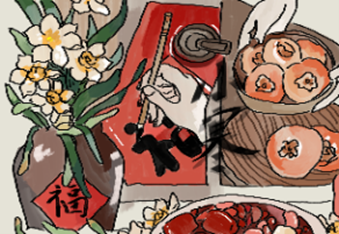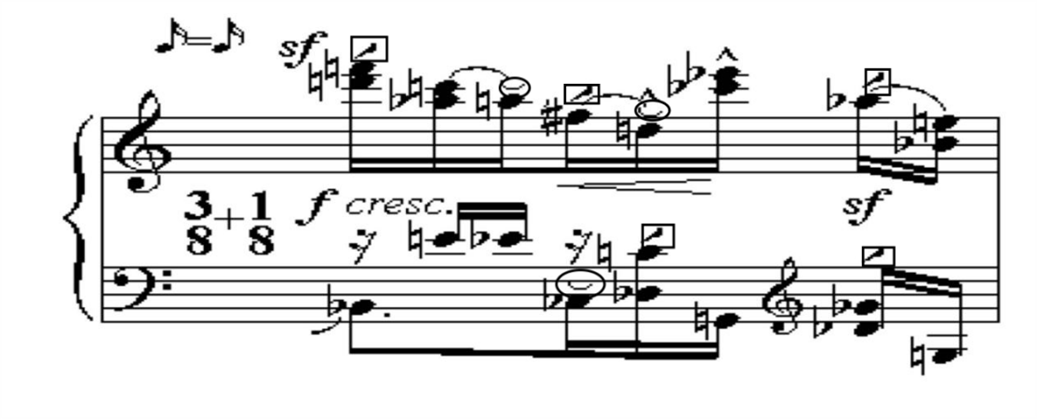

Volume 5
Published on April 2024Since the 21st century, Korean pop music, represented by TV dramas, music, movies, fashion products, and other cultural forms, has spread widely worldwide. 2012 when Psy’s Gangnam style swept the globe, Jay Chou, a representative figure of the Chinese music scene, said, “Don’t let the K-pop become more and more arrogant, the Chinese Chinese pop music is the best.” However, is this the case? In 2022, the value of the cultural industry represented by the Korean Wave accounted for 18% of South Korea’s GDP, nearly $320 billion (Qiu 2014). China and South Korea are culturally similar and belong to the same East Asian region, so the spread of Korean pop music in China is also of some reference significance. This paper will take BlackPink as a case study and analyze why K-pop has gained tremendous popularity worldwide by combining music characteristics, team characteristics, and marketing strategy. It will then explore the way of overseas global marketing of Chinese pop culture to maintain the features and style of Chinese culture while spreading Chinese pop culture to the world and expand the vision of cross-cultural marketing of Chinese pop music by learning from the Korean market, to provide a reference basis for the cross-cultural marketing of China’s contemporary pop music and fill the blank of transnational cultural dissemination of Chinese pop music.

 View pdf
View pdf


In the “Economic and Philosophic Manuscripts of 1844,” young Marx addressed a novel issue: whereas traditional political economists regarded private property as an object opposed to the subject, adopting a metaphysical mode of thinking characterized by subject-object opposition, Adam Smith, referred to by Engels as the “Luther” of political economy, for the first time connected private property with the subject, thereby breaking away from its previous characterization as an “objective, external” dimension, implying signs of transcending Feuerbach. However, although Adam Smith and other political economists placed private property within human nature, due to their class limitations, they effectively treated profit-seeking activities as human nature, which is essentially a negation of humanity and diverges from human essence on the level of value. Marx, in critiquing their inherited ideas, not only links labor with private property but also understands labor as genuine, a return to “the essence of humanity,” as free labor rather than alienated labor, thereby laying the groundwork for the establishment of a scientific understanding of practice.

 View pdf
View pdf



Under the call of the times for the inheritance and protection of the excellent traditional Chinese culture, children's cultural picture books provide new possibilities and innovative strategies for learning in the preschool stage. At the same time, in the context of digital education transformation, comprehensive analysis and combination of preschool cultural education and technology innovation and integration is the call of the new era, but also for the physical and mental development of young children and the cultivation of national pride has indelible significance. Therefore, this study focuses on children's cultural picture books, and innovates the form of point-to-point reading to explore the innovation and feasibility of its integration with cultural education, with the aim of providing new innovative forms and practical ways for cultural teaching for young children. The integration of culture and technology with audio cultural picture books and picture book teaching is not only a new attempt of digital teaching, but also an innovation to protect and pass on Chinese culture and to cultivate the cultural background of young children, which is of social and educational significance.

 View pdf
View pdf


Whether it’s mainland China’s Hao Fang or Taiwan’s Zhang Tiezhi, they are both committed to constructing a “resistance” narrative to describe the rise and development of rock music. [1] Zhang Tiezhi believes that the emergence of rock music in mainland China has already “carried the banner of enlightenment.” [2] He also mentioned that rock music, together with poetry, films, the documentary “River Elegy,” and the book series “Toward the Future,” collectively constituted the “enlightenment power of the chaotic era.” [2] However, as part of the cultural mosaic of mainland China in the 1980s, how was rock music shaped, reconstructed, and utilized in the power system of commerce, culture, and politics? How does rock music interact and create tension with other cultural phenomena? With the tremendous changes in Chinese society in the 21st century, facing different historical contexts, has Chinese rock music also undergone changes? Unfortunately, Zhang did not delve into these questions seriously, and at the same time, mainland Chinese rock musicians have not included these questions in their thinking. This paper selects Cui Jian and the Second Hand Rose band as representatives of Chinese rock music in different periods. Through the theoretical perspectives of political philosophy, sociology, and history, it analyzes their lyrical texts and historical backgrounds, delving into Cui Jian’s unique understanding of “revolution” and “capitalism” as a rock superstar of the 1980s, and how this understanding has shaped the unique “sensory structure” of Chinese rock musicians. At the same time, this paper aims to provide some insights for the future development of Chinese rock music.

 View pdf
View pdf



In previous studies of the Evenki ethnic group, different perspectives have been presented regarding the research on Evenki language culture in various historical contexts and research periods: researchers from each era exhibit differences in research directions, angles, and awareness of issues. These differences are closely related to research objectives, external backgrounds, power relations, and the development of disciplines in different eras. This article suggests that an analysis of the Evenki language not only helps us understand the changes in ethnic language forms over different periods but also allows us to observe people's psychological states and practical needs against the backdrop of the times. In the context of today's era, this can effectively enhance our adaptability to linguistic and cultural transformation, and desktop research is a rapid method of reading literature and collecting language information categorization. The article demonstrates that the desktop learning research method proposed surpasses current typical language learning methods, helping us better adapt to the intelligent society and the era of big data.

 View pdf
View pdf



This article traces the historical emergence and development of the concept of ugliness in Western classical art, focusing on its evolution from ancient Greece to the 20th century. Initially, beauty was revered above all else, with ugliness deemed impure and sinful. However, thinkers like Augustine introduced the idea of relative ugliness, highlighting its role as a contrast to beauty. In the 18th century, Baumgarten defined aesthetics, exploring the notion of ugliness as the opposite of beauty. Rosenkranz further categorized ugliness into natural, spiritual, and artistic forms, laying the foundation for modern ugliness studies. The tumultuous social backdrop of the 19th and 20th centuries, including the World Wars and economic disparities, saw a resurgence of interest in ugliness as a means of artistic expression. This trend manifested notably in expressionist music, exemplified by Arnold Schoenberg's adoption of the twelve-tone technique. Schoenberg's "Prelude" is analyzed to demonstrate how he utilized rhythm, meter, dynamics, and melodic direction to embody the principles of ugliness studies. The article concludes by emphasizing the significance of ugliness studies in modern and contemporary art, challenging traditional aesthetic principles and contributing to a broader understanding of artistic movements beyond beauty.

 View pdf
View pdf


This essay is written to promote effective vocabulary teaching for Chinese English teachers. Vocabulary is an important part of English learning in primary school, and it is also important for students to focus on memorizing during the learning process. This essay begins with a review of existing literature that summarizes main theories of vocabulary and different teaching approaches. Then, it suggests which aspects of English vocabulary should be taught and the suitability of different teaching methods for learners based on the characteristics of Chinese primary school students learning English. Finally, it provides suggestions for improving teachers' effective teaching and young learners' interest in vocabulary learning.

 View pdf
View pdf


When people are lovelorn, they need others' understanding. Once when my friend was in pain, he even hurt himself. He often quarrelled with his parents and friends. He said that he didn't want to do this, but he was always full of sad emotions, which made him out of control. Later, it got worse and he even hurt himself. He said he knew it was wrong, but he didn't know what to do. We made a lot of phone calls. I could feel all his negative emotions. I tried to take him out to climb mountains, watch movies, dine at good restaurants to kill time. But I could feel that he was pretending to be happy, so as not to waste my time. What I took him to do can only make him escape from sadness for a short time, so I have been trying to find ways to help him, let him release these emotions, and find some suitable ways to make him better face his life.

 View pdf
View pdf


Movies with a rich literary style are often filled with dreams of youthful emotions. The film Soul Mate redefines the role of women, depicting the transition from girls to women as a chrysalis-like transformation. Through the analysis of the plot of the film, this paper discusses the positioning of the role of the film, and compares the films describing the theme of feminism.The final aim is to seek to explore the inner dynamics among women, unveiling the fragile and genuine aspects of human nature while emphasizing the value of friendship.

 View pdf
View pdf


Marion's painting philosophy primarily addresses the dialectical unity between the visible and the invisible, suggesting that neither can be deemed more "real" than the other. Instead, they act as mutual validations of each other's existence. The concept of visibility is constrained by human perceptions and physical limitations, often leading individuals to see only what aligns with their desires and past experiences. This selective perception underscores the inherent limitations or "void" within visibility.Marion quotes in her book: "Fire in water, divinity in humanity, paradoxes arise from the intervention of the visible in the realm of the invisible." This highlights why philosophical discussions on painting inevitably involve introspection. Artistic creation is about transforming the visible into the invisible and then manifesting the invisible as visible. Throughout this transformation, individual consciousness merges with collective human consciousness, allowing art to preserve its uniqueness within the broader narrative of art history and to establish its own value. This personal perspective can also be termed as one's gaze, a human attribute adept at self-justification and pattern creation within one's cognition. Through vision, we acknowledge the 'void of visibility,' which becomes a dense, chaotic mass at the moment of observation, generating an 'invisible void'—the brain organizes the visible and extends it into the invisible, blending the unseen into the seen.

 View pdf
View pdf




